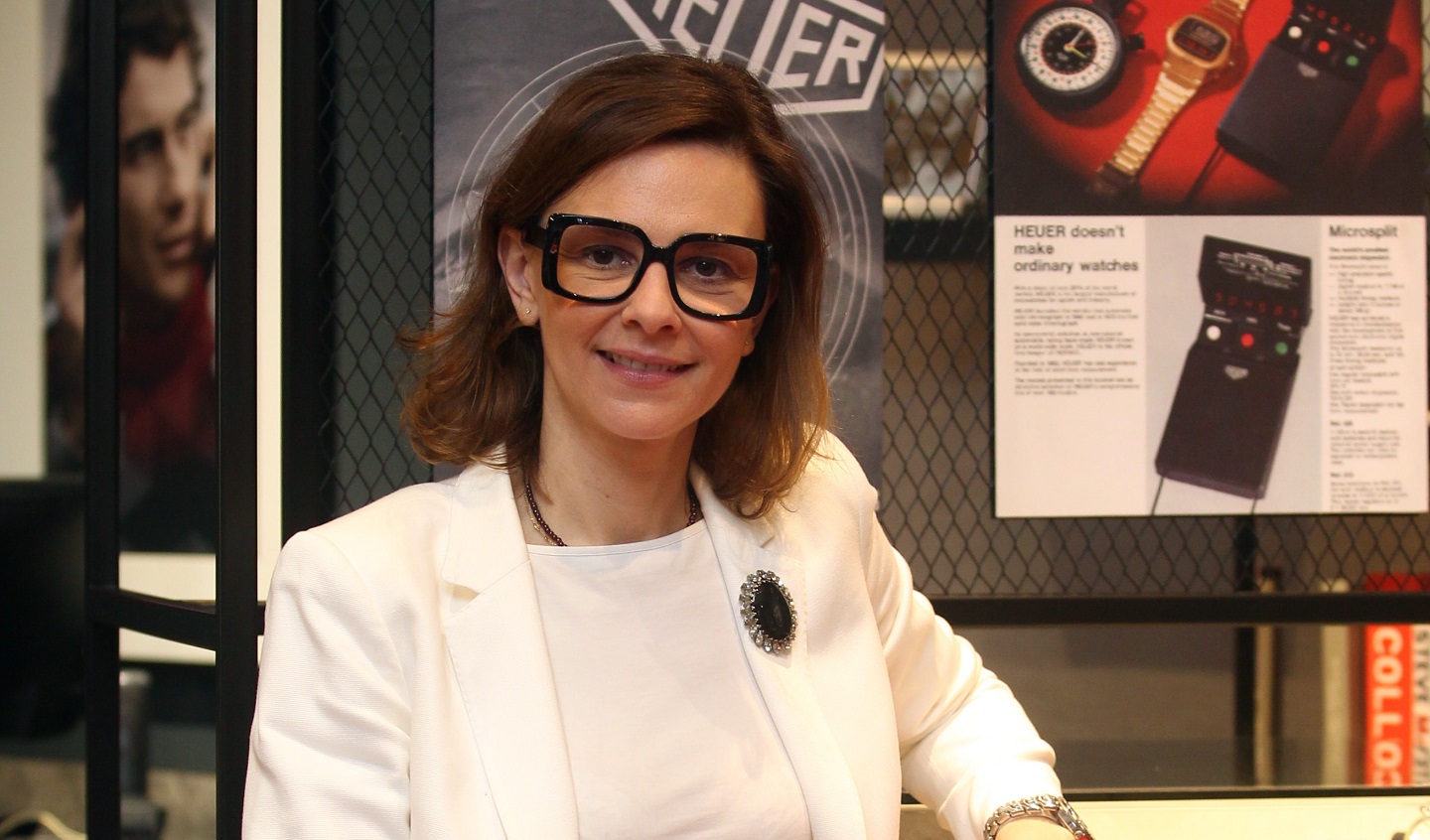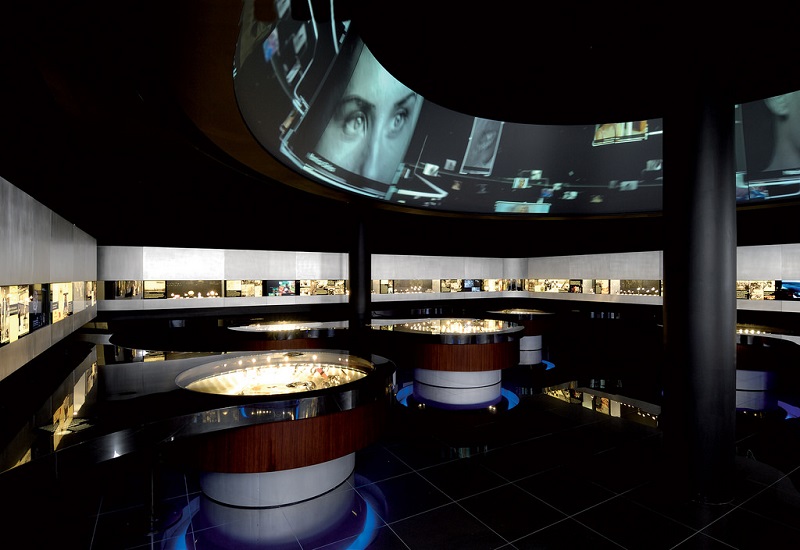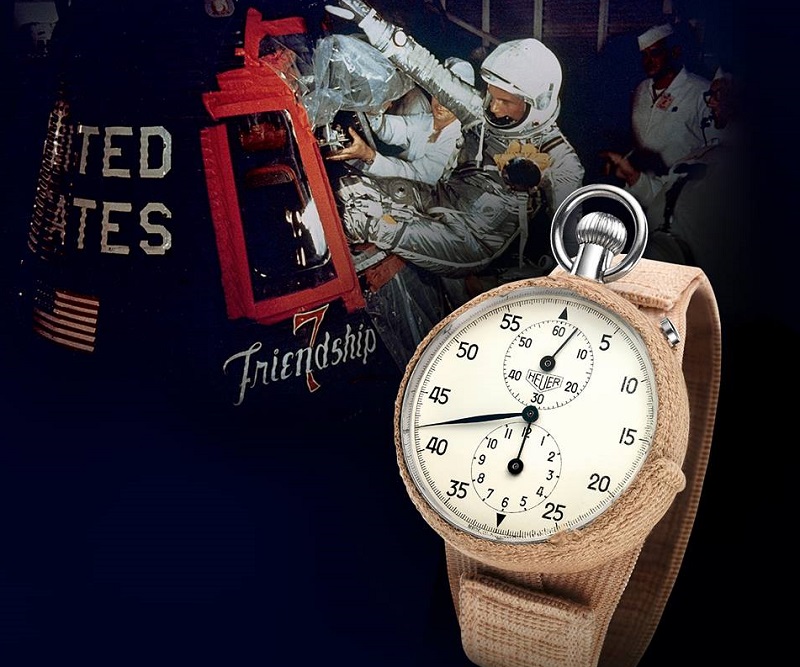
TAG Heuer heritage director Catherine Eberlé-Devaux (Photo: Mohd Izwan Mohd Nazam/The Edge)
It is a known fact that your past influences your future, but what you have learnt from that history is what paves the way for your forthcoming success. This is one of the many words of wisdom I learnt while speaking to TAG Heuer heritage director Catherine Eberlé-Devaux. Although it is her second time to Kuala Lumpur, she has not had the chance to discover the beauty of our city, but hopes to return. We meet at the brand’s boutique at The Gardens Mall in Kuala Lumpur to explore the museum pieces she has brought for an exhibition that truly embodies the watch brand’s penchant for innovation. “This exhibition was built around innovation, so you have the most outstanding pieces that really are the soul in our history,” she says.
Eberlé-Devaux had spent 15 years in the shoe industry, being involved in digital strategy, prior to joining TAG Heuer. “It was cool but I was in a new episode of my life. I analysed that what I really liked was the patrimony of a brand for a company — to understand it and to understand how it can be linked to society, to cultural changes, and how it can somehow help build the next steps. I wrote a little essay about that and at some point, TAG Heuer was looking for someone with this kind of approach and I said, ‘Okay, let’s give it a try’.”
As heritage director, Eberlé-Devaux handles the archives, the museum in La Chaux-de-Fonds in Switzerland, the vintage watch repair workshop and the communication of the brand’s watchmaking mastery as well as oversee its heritage strategy. When asked why it is important to analyse the watch company’s past, she answers, “To make sure you are not in contradiction. If you develop a new watch, you have to know if this is [part of] a historical collection, like the Link or the Carrera collection … this is so that you don’t think you have developed something new [that] had already been developed in the past, or so that you don’t assume something that did not happen.”
Eberlé-Devaux says when expanding the pieces in the museum, she has three criteria for her purchases — she looks for items the brand does not yet have, historical pieces that have been worn by celebrities, and exceptional timepieces, such as the Autavia piece that came with a signed letter from Jack Heuer responding to a rude complaint about a watch fault. In the letter, Eberlé-Devaux reveals that Jack said that he was sorry for the issues but just as one cannot say Rolls-Royce is bad because one car has a mechanical problem, why would one do so with a Heuer? “The letter was signed and it was such a cool story, so I was really happy to buy it,” she says.

Eberlé-Devaux admits that she has developed new interests because of the brand. “Before TAG Heuer, I had never watched Grand Prix or Formula One without being bored after one minute but now, I realise that it is a fantastic world and that the drivers are really crazy guys. A new universe opened up for me and I’m completely thrilled to have joined this company and be doing this job.”
Having been a part of the TAG Heuer family since 2014, Eberlé-Devaux is a veritable treasure trove of stories and insights. She walks me through some of the iconic timepieces she has brought for the exhibition and her excitement is truly infectious. We look at the 1969 Monaco, an iconic creation that will celebrate its 50th anniversary this year. “This one is the version that [Steve] McQueen had on in the movie Le Mans. Actually, he had the opportunity to wear the Monaco in the movie because it was selling very badly. So, it was the only watch that Jack Heuer had in stock… McQueen found it really cool, and the blue of the dial with the blue of his eyes made such a beautiful picture that it was really meant to be.”
Also in the exhibition is the 1933 Autavia (a contraction of automobile and aviation) timer, which was the first on-board stopwatch for cars and aircraft. “This type of timepiece was really our core business until the late 1960s. That and stopwatches like those were really what Heuer was famous for, much more than its wristwatches. Today, it’s the opposite,” says Eberlé-Devaux.
There is a replica of the first Swiss stopwatch that was worn by astronaut John Glenn in the Friendship 7 Spacecraft in space. “This is a replica because the original one is in the Smithsonian Museum in the US,” she says. This piece usually never leaves the TAG Heuer museum but Eberlé-Devaux made an exception for this exhibition.

She also brought her favourite piece, the Ring Master. Released in 1957, this unusual stopwatch is what one would call a seven-in-one, because of a set of seven interchangeable coloured rings that comes with it. Each ring has a different scale — for boxing, track and field, and so on. The seventh ring is blank, allowing owners to put their own mark. “The length of a second is always the same, but the flavour of it, the meaning of it, can be completely different depending on what you’re doing. A minute of watching a boxing game is not the same as a minute of waiting for your pasta to be cooked. Time is yours, so the Ring Master is about mastering time and time keeping certain disciplines … As a heritage curator, I can like this for that one reason,” says Eberlé-Devaux.
Referring to TAG Heuer’s first wristwatch, she says, “We were not the first brand to put a strap on a stopwatch, but we were really among the first ones.” When the trend began, there was resistance in some markets. She explains that in the US, it was considered arrogant to show off your watch on your wrist, but people slowly gave in because of the undeniable convenience. She draws an interesting connection between the pushback felt with wristwatches and the resistance that young people had to connected watches more recently. “Young people did not want to put something on their wrist because they have cell phones and because they think it’s not worth it to show something on your wrist, but by designing this type of connected watch, we explained to them that it was more convenient to have that here than to have to look for a cell phone in a bag … Then, it was mechanical stopwatches; today, it’s the connected watches — same battle a century apart,” she explains.
When asked what the DNA of TAG Heuer is from her perspective, Eberlé-Devaux says, “Speed, mastering time and being as precise as possible are what we’ve done throughout our whole history and still doing so with chronographs.” Having explored many memorable restorations and even finding numerous unusual pieces, she remarks that one of the highlights of her career thus far has been the globetrotter exhibition she organised in 2017, which spanned 10 countries. Enthused by the variety of her tasks and the diversity of her position, Eberlé-Devaux is excited for what the future may bring.
This article first appeared on Feb 25, 2019 in The Edge Malaysia.


